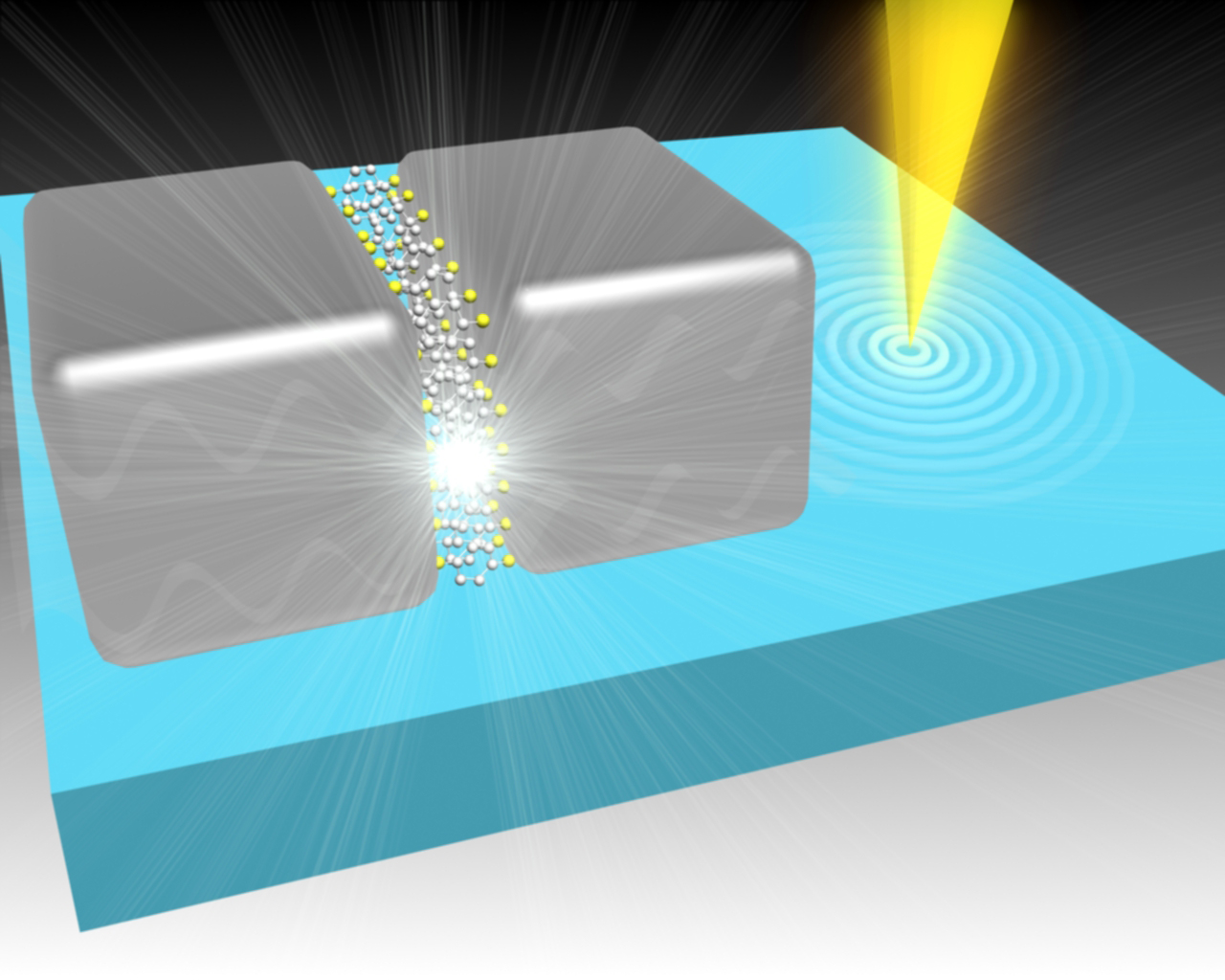Nanoelectronic circuits that operate more than 10,000 times faster than current microprocessors
April 14, 2014

A focused electron beam (yellow) was used to study the optical properties of two plasmonic resonators bridged by a layer of molecules that are 0.5 nm long (credit: Tan Shu Fen, National University of Singapore)
Circuits that can operate at frequencies up to 245 terahertz — tens of thousands times faster than today’s state-of-the-art microprocessors — have been designed and fabricated by researchers at National University of Singapore and Agency for Science, Technology and Research (A*STAR).
The new circuits can potentially be used to construct ultra-fast computers or single-molecule detectors in the future, and open up new possibilities in nanoelectronic devices. For example, by changing the molecules in the molecular electronic device, the frequency of the circuits can be altered over hundreds of terahertz.
The invention uses a new physical process called “quantum plasmonic tunneling.” Plasmons are collective, ultra-fast oscillations of electrons that can be manipulated by light at the nanoscale.
The researchers next plan to explore integration of these devices into real electronic circuits.
Results of the research were published in the journal Science on March 28, 2014. The study is funded by the Singapore National Research Foundation (NRF) and A*STAR.
Abstract of Science paper
Quantum tunneling between two plasmonic resonators links nonlinear quantum optics with terahertz nanoelectronics. We describe the direct observation of and control over quantum plasmon resonances at length scales in the range 0.4 to 1.3 nanometers across molecular tunnel junctions made of two plasmonic resonators bridged by self-assembled monolayers (SAMs). The tunnel barrier width and height are controlled by the properties of the molecules. Using electron energy-loss spectroscopy, we directly observe a plasmon mode, the tunneling charge transfer plasmon, whose frequency (ranging from 140 to 245 terahertz) is dependent on the molecules bridging the gaps.